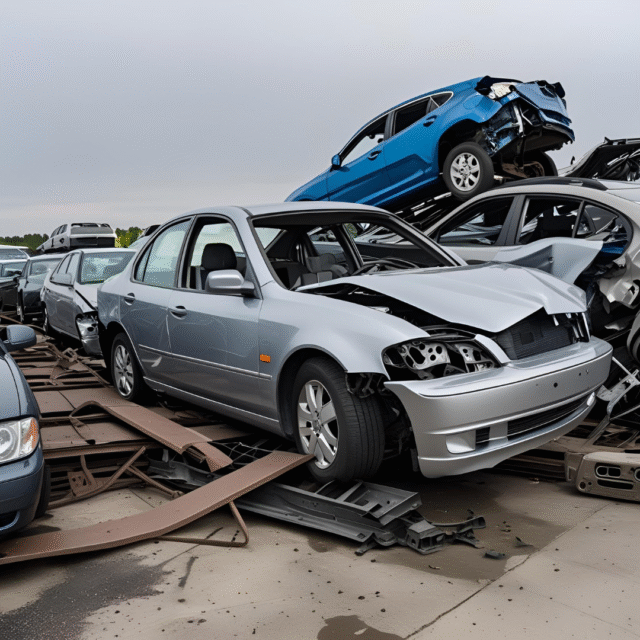Introduction
Scrap yards might appear to be nothing more than piles of rusted metal and worn-out parts. Many people drive past them without a second thought. But behind those gates lies a world full of unexpected stories and valuable discoveries. The car removal industry has long played a part in keeping communities cleaner and more organised, but it also serves another purpose—uncovering treasures that others often overlook. From rare components to unique vehicles, scrap yards can surprise even the most experienced mechanic or car enthusiast.
Where Scrapped Cars Go
When a car reaches the end of its working life, it does not simply vanish. It usually ends up at a scrap yard or dismantling site. There, the car is examined, and its parts are sorted based on their condition. Some parts are too damaged to be reused, but many still have life left in them. These are removed, cleaned, and stored for potential reuse or resale.
A large number of vehicles that arrive at scrap yards are not completely wrecked. Often, they are written off due to insurance decisions or mechanical problems that are too costly to fix. But the rest of the car—seats, windows, wheels, engines, and other parts—can still be of use.
Rare Parts and Obscure Finds
Scrap yards have become known as reliable places for sourcing parts that are no longer made. In some cases, collectors and restorers visit these sites in search of items that are impossible to find anywhere else.
Some examples include:
- Discontinued dashboards and switches: These are useful for older vehicles where modern replacements do not match the original layout.
- Classic car body panels: Older cars with unique body shapes often need specific panels that only exist in original form.
- Vintage badges and ornaments: These items are often collected or used in restoration work.
- Rare engine models: In some cases, entire engines are still in working condition or can be rebuilt.
Each scrap yard operates with a mix of common and rare items, and no two visits are ever the same.
Unusual Vehicles
It is not just the parts that draw attention—sometimes, entire vehicles turn out to be special. In several cases across Australia, classic cars have been found sitting in yards, untouched for years. Some of these include old utes from the 1960s, limited-edition models, and even rare imported vehicles that never gained popularity locally.
These discoveries are often unexpected. A car might appear weathered on the outside, but under the surface, it could still have structural integrity and a solid frame. Enthusiasts looking to restore classic cars often start their search at yards where such hidden gems are more common than people think.
The Role of Dismantlers
The people who work in scrap yards are often skilled at identifying value. Dismantlers are trained to spot reusable parts, understand engine conditions, and know what might be worth saving. Their experience allows them to act quickly and handle materials in a way that supports both the repair industry and recycling efforts.
Beyond basic sorting, they are also responsible for draining harmful fluids and ensuring that dangerous materials are handled properly. This includes items such as engine oil, battery acid, brake fluid, and petrol. Their work plays a key part in keeping these yards safe and preventing environmental harm.
Scrap Yards and Local Communities
Scrap yards also provide support to local workshops and car owners who need parts but do not want to spend too much on brand-new replacements. Many people repairing vehicles use second-hand components because they are often the only option for certain makes or models.
In places like Caboolture, scrap yards also help reduce the number of unwanted cars left on streets or properties. Services such as cash for cars Caboolture give people a way to remove unwanted vehicles while allowing yards to recover parts that others can use. It connects local need with supply, creating a practical system for both disposal and reuse.
Recycling and Environmental Impact
When a car is dismantled, many of its parts and materials are recycled. This includes metal, glass, plastic, and rubber. Australia recycles hundreds of thousands of cars each year, helping reduce waste and pollution. Each recycled tonne of steel saves energy and cuts down on emissions.
By removing usable parts, scrap yards delay the need for producing new ones. This reduces the demand for mining, manufacturing, and transport, all of which have environmental costs. Car removal and recycling also help prevent harmful substances from entering soil and water systems.
Stories Behind the Scrap
Scrap yards are full of stories. Behind each car lies a journey—family trips, work commutes, or first driving lessons. Some cars have sat in one spot for years before being removed. Others arrive after accidents or storm damage. These cars may be silent, but they each carry pieces of real life.
Mechanics and collectors often share stories of rare discoveries. For example, a hobbyist in Queensland once found an original Holden HQ engine buried under other parts, still in working order. These kinds of stories are not rare in this industry. Every scrap yard visit can bring surprise.
Conclusion
Scrap yards are more than just metal heaps. They are places where vehicles are given a final purpose, where parts find new homes, and where unexpected finds remind people of the value hidden in old machines. Car removal plays a central role in this process, making sure nothing useful is left behind.
From rare finds to practical parts, scrap yards support mechanics, restorers, and drivers alike. They help reduce waste, support repairs, and give old vehicles one last job to do. So next time you pass one, remember—it might hold more than rust. It might hold your car’s next missing piece.







